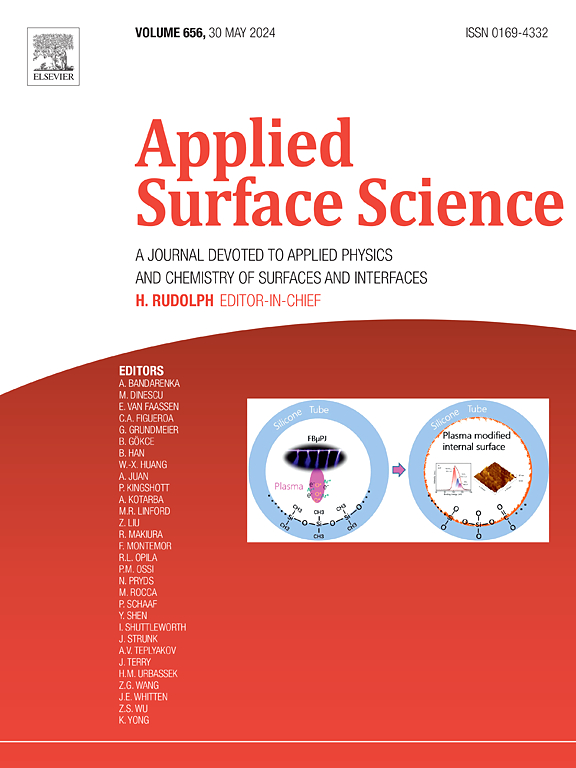Electrocatalytic water splitting by bifunctional Zircon-doped borophene
IF 6.3
2区 材料科学
Q2 CHEMISTRY, PHYSICAL
引用次数: 0
Abstract
Oxygen evolution reaction (OER) and hydrogen evolution reaction (HER) are crucial for renewable energy technologies such as water splitting. Borophene, a two-dimensional (2D) boron material, has attracted significant interest for its unique electron deficiency and potential applications in energy conversion. However, practical studies on borophene’s electrocatalytic performance remain limited. Here, we demonstrate a strategy to enhance the bifunctional electrocatalytic activity in HER and OER of borophene by doping with zirconium compounds. The addition of Zr to boron enhances electrocatalytic properties by improving performance in both OER and HER, achieving overpotentials and Tafel slopes of 252 and 240 mV, 43 and 203 mV/dec, respectively. Additionally, conducting the measurements at 40 °C led to achieving the overall water-splitting potential of 1.541 (V vs. RHE). Stability tests over 1000 h at ± 10 mA/cm2 highlight the composite’s robustness, outperforming Pt/C in HER and matching the stability of RuO2 in OER. Ex-situ analyses: X-ray photoelectron spectroscopy (XPS), electron paramagnetic resonance (EPR), and X-ray diffraction (XRD) reveal insights into the chemical structure evolution during the electrochemical process. This study not only advances the understanding of borophene’s electrocatalytic mechanisms but also paves the way for its application in efficient and sustainable energy technologies.
双功能锆掺杂硼吩的电催化水分离技术
氧进化反应(OER)和氢进化反应(HER)对于水分离等可再生能源技术至关重要。硼吩是一种二维(2D)硼材料,因其独特的电子缺陷和在能源转换中的潜在应用而备受关注。然而,有关硼吩电催化性能的实际研究仍然有限。在这里,我们展示了一种通过掺杂锆化合物来增强硼吩在 HER 和 OER 中的双功能电催化活性的策略。在硼中添加锆可提高 OER 和 HER 的性能,从而增强电催化特性,使过电位和 Tafel 斜率分别达到 252 和 240 mV、43 和 203 mV/dec。此外,在 40 °C 温度下进行测量可使整体水分离电位达到 1.541(V vs. RHE)。在 ± 10 mA/cm2 条件下进行 1000 小时的稳定性测试凸显了该复合材料的稳定性,在 HER 中优于 Pt/C,在 OER 中与 RuO2 的稳定性相当。原位分析:X 射线光电子能谱 (XPS)、电子顺磁共振 (EPR) 和 X 射线衍射 (XRD) 揭示了电化学过程中的化学结构演变。这项研究不仅加深了人们对硼吩电催化机理的理解,还为其在高效和可持续能源技术中的应用铺平了道路。
本文章由计算机程序翻译,如有差异,请以英文原文为准。
求助全文
约1分钟内获得全文
求助全文
来源期刊

Applied Surface Science
工程技术-材料科学:膜
CiteScore
12.50
自引率
7.50%
发文量
3393
审稿时长
67 days
期刊介绍:
Applied Surface Science covers topics contributing to a better understanding of surfaces, interfaces, nanostructures and their applications. The journal is concerned with scientific research on the atomic and molecular level of material properties determined with specific surface analytical techniques and/or computational methods, as well as the processing of such structures.
 求助内容:
求助内容: 应助结果提醒方式:
应助结果提醒方式:


